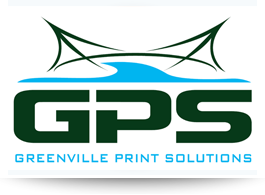Top 5 Designs of Environmental Graphics for Your Space

Environmental graphics can have quite an impact on a space. Imagine walking in the supermarket and there are no labels, no signs. Or you are just quietly driving to work and there are no street signs. Sounds very confusing, right? Fortunately, this scenario is not real, and we can thank environmental graphic design for that. Environmental graphic design or EGD by its initials is a multidisciplinary branch of design that combines graphic design, architecture, art, lighting, landscape, and other disciplines to improve the user experience through the visual translation of ideas within the built environment Now, you must curious about how to improve your work environment with some great environmental graphics, and there is no one better to assist you than Greenville Printing Solutions!
The main goal of environmental graphics is to create surroundings that are in tune with human needs. When this purpose is met, a bond is formed between people and places. Branded environment design with interior decoration and wayfinding systems are the most common examples. Certainly, one of the greatest abilities of environmental design is to make a space more informative, easier to navigate, and memorable for its visitors. Take a look at the following designs!
Corporate Environmental Branding Through Environmental Graphics
When it comes to branded environment design, it’s not just about putting your logo here and there. To create a branded environment design, a variety of company signs, decorations, and color schemes should be used and think through. All these elements together express your mission and ideals without having to give a lengthy speech. This strategy is also a fantastic way to improve client satisfaction. In this type, you can choose from Internal or exterior design for branding.
- Interior design for branding: Human needs are placed at the top of the priority list in experiential interior design. Corporate environmental branding uses a variety of mediums to create a unique space for your company. Interior signs, large images, and inventive constructions are examples of these. At the same time, they encourage customers to interact with the place.
- Exterior design for branding: Beyond interior design, corporate environmental branding is important. In fact, attracting the attention of potential customers begins outside. Your exterior environmental design ideas should appeal to the local community and draw in customers. Your corporate vision should be defined by all design components of your branding strategy.
Wayfinding Systems
Wayfinding systems are exactly what they sound like: systems that aid in the navigation of humans; the systems are classified as spatial problem-solving. A wayfinding system’s designer’s job is to tell people in the surroundings about their current location, desired location, and how to move from one to the other.
Wayfinding is useful in any setting, but it is especially important in locations like hospitals, offices, parking garages, and large cities for those with little leisure time. An experiential designer aims to make the experience a little more unique, which might be more than just labeling rooms or floors.
Exhibition Design
Learning might be tedious for some people. There’s no guarantee that your socks will be knocked off whether you’re visiting a museum, a heritage park, or a trade exhibition. It’s a tremendous treat when they are, though.
Exhibition design is a type of environmental and experiential design that uses architecture, graphic design, interaction design, lighting, and audio to communicate information to visitors to an exhibit. This type of designer’s task is to integrate these aspects to create an atmosphere that successfully and elegantly tells a story.
Place Identification
What sets one location apart from the rest is its identity. So, in terms of place identification, what is environmental graphic design? It can be characterized as a strategy for influencing people’s perceptions. It influences a person’s individual experience in a given setting.
The elements used in environmental graphic design are used to identify places. Architectural signage, huge graphics, imaginative constructions, and other thematic features are among the elements. These are used to impact interactions that are unique to a particular setting.
Environmental Graphics for Interactive Experiences
This kind of environmental design takes UX to a whole new level, focusing on user interaction with a physical location as a whole. The purpose of points inside a room is to educate, stimulate, and inspire all who come into contact with it. Touchpoints are designed to connect consumers with the ideas that underpin the environment they’re in.
Other sorts of environmental design are naturally more tangible and digital than interactive experience design. Rather than having to admire the design from afar, these displays are made to be touched.
Make your place unforgettable with Greenville Printing Solutions!
Let’s say you are frustrated because your business has passed unnoticed but this doesn’t have to be this way anymore, when you hire Greenville Printing Solutions we make sure your customers not only remember your brand and logo but as well we offer them a full customer experience! Let’s work together!
Share this article!
